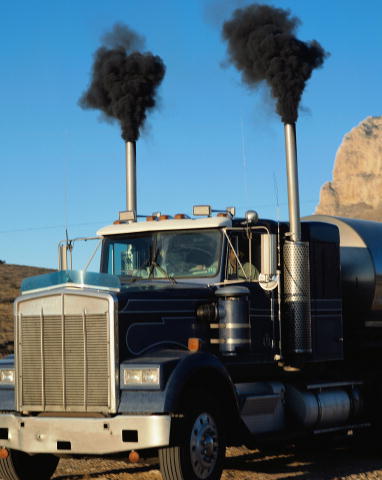Trust me. You never want to follow a motor vehicle exhausting really strong-smelling, noxious fumes. Been there, done that who knows how many times.
It’s even worse from a feeling-guilty point of view, that is, to be the owner or driver of one of these. I ought to know. I was at one time, one of these owners.
The problem all started for me in Mountain View, California where I once lived. I resided there because of a job I held in neighboring Sunnyvale.
It was circa 1978, probably in the fall, and I was in the market for a new car. The one I had been driving was not only a gas guzzler, but for that matter, an oil sipper too. It was not a good time for driving obviously as there was an oil embargo in effect then. I remember the exceedingly long lines of cars when it came time to fill the tank.
So, I bought a 1979 I won’t say what. Let’s just put it this way: Today, this particular model is no longer manufactured.
At any rate, the car was good for a while, that is, until the engine had a major failure.
Because, by that time, neither the car nor its parts were warrantied, my decision was: rather than try to have the under-the-hood power plant repaired I decided to have the prime mover replaced instead. That, unfortunately, turned out to be the wrong decision, one that later on was regrettable.
For, you see, instead of opting for a new, straight-out-of-the-crate engine, I went the slightly less expensive route of getting a rebuilt.
Big mistake. Not only were the seals between the valve covers and the engine block prone to oil leaks, but after a period of time and presumably due to wear, black smoke would pour out of the exhaust during warm-ups on winter mornings. I can’t tell you the reason or reasons exactly why this was, all I can tell you was that it was. Other than that the car ran okay.
I’m not sure how many years this problem went on for, but the vehicle never, and I mean never for a long as I had it, failed to pass a smog test.
I did my best to keep the car’s engine tuned always doing that work myself – buying and inserting properly gapped spark plugs, using a timing light to make certain the engine was timed right, making sure the EGR (exhaust gas recirculation) valve and in-line fuel filters were replaced regularly, saw to it that the carburetor was working the way it was supposed to and things of this nature.
It was a good car and transported me where I wanted and needed to go; don’t get me wrong. It just produced black smoke from the tailpipe during winter morning warm-ups, is all.
It was when I changed careers in the early 1990s that I knew that I was earning enough money to afford buying a new vehicle, which I did. I traded up.
The then new ’93 lasted a total of 14 years before I sold it. It never once that I can recall ever had engine problems. It had fuel injection in place of carburetion, and that could have been a big reason why. Its biggest disadvantage, however, was with the car fully loaded with passengers; it wasn’t the best when it came to braking, especially going downhill.
That said, in my book neither of the aforementioned problems, if you’ll forgive the pun, passes the “smell” test, if you get where I’m coming from.
The cars I have owned and driven have been pretty much smoke-free since then, thankfully.
– Alan Kandel

Even when the vehicle has a transparent exhaust does not mean it is not harming our breathable air. So how much worse is it when we can see the amount of pollution?
Which is why I much prefer zero-emissions vehicle usage.
Very interesting, I switched to an electric 3 years ago. Pollution is really big concern that sometimes feels like it’s not getting the attention it deserves. That said, there has been great progress.